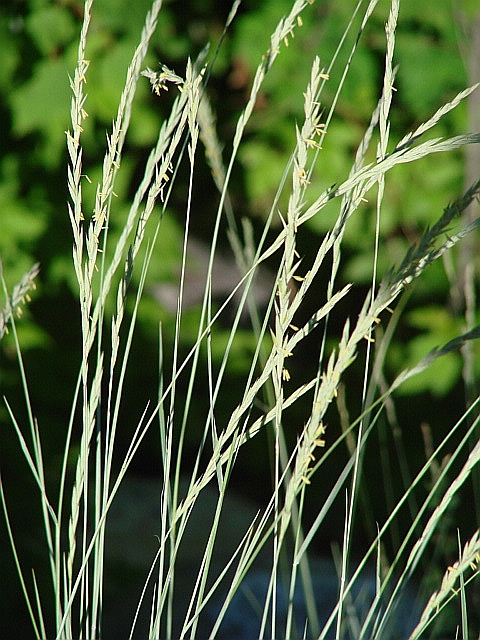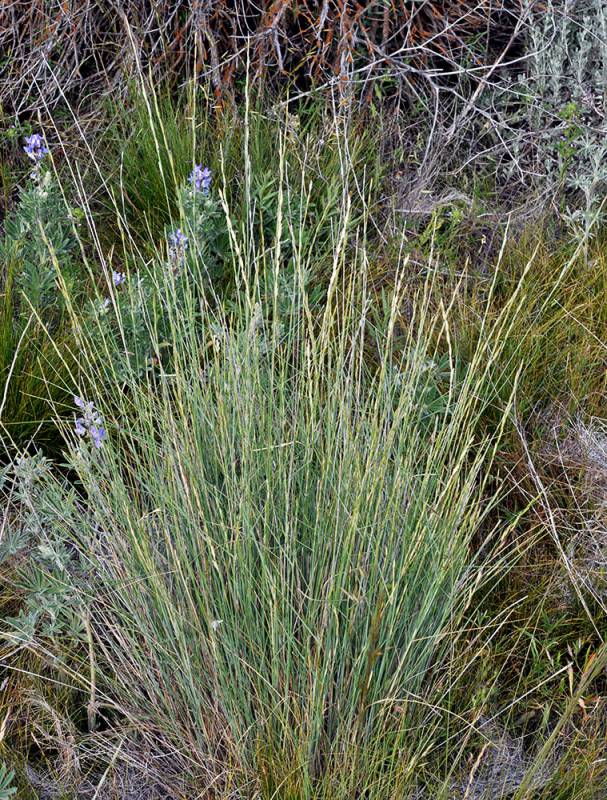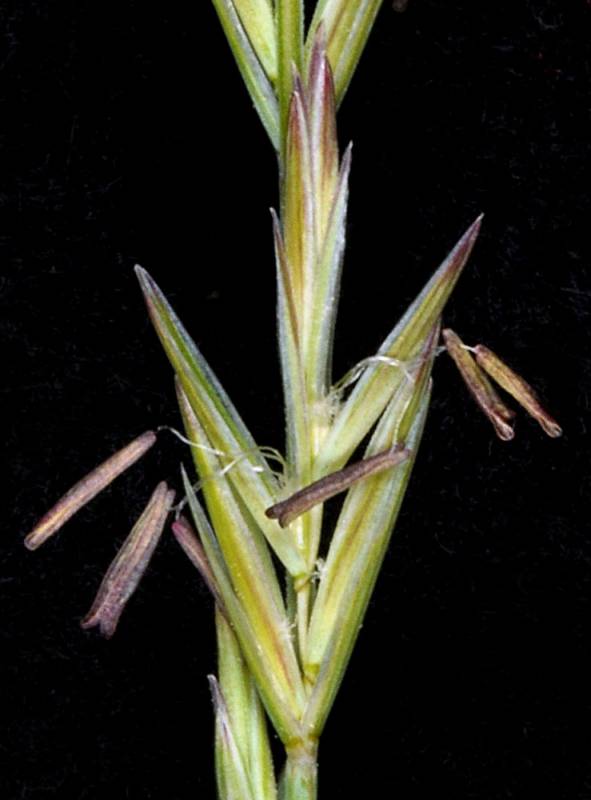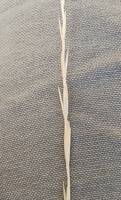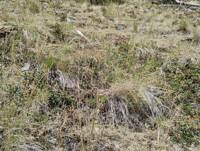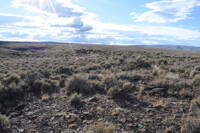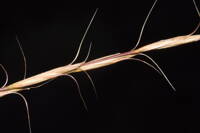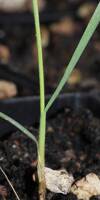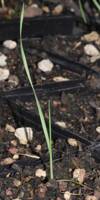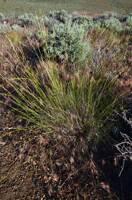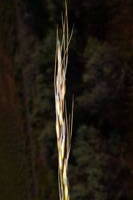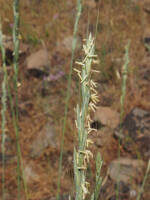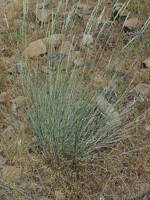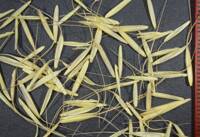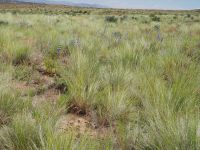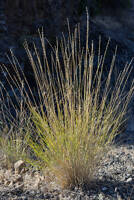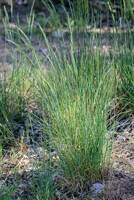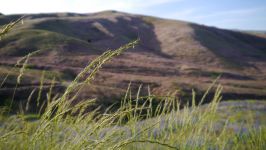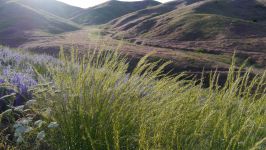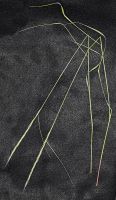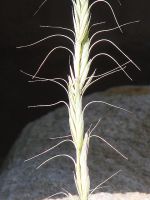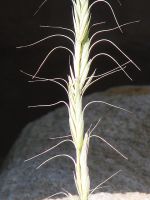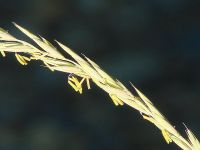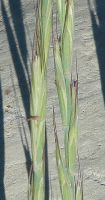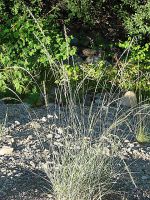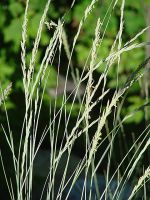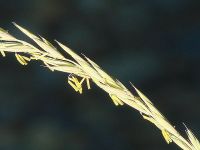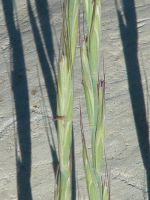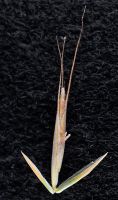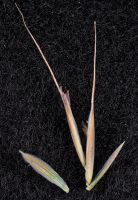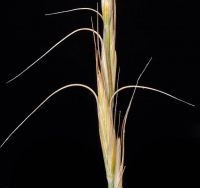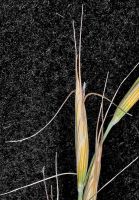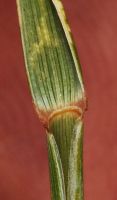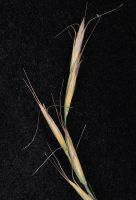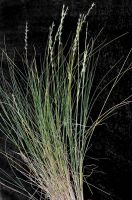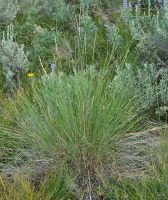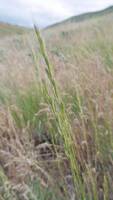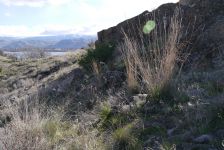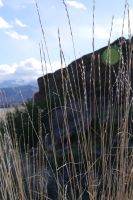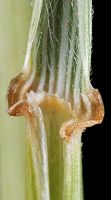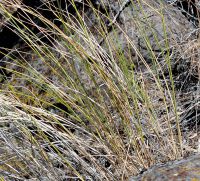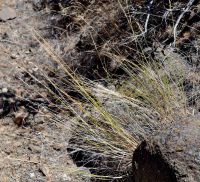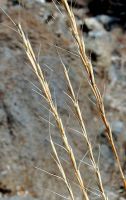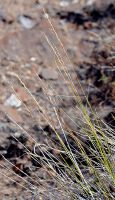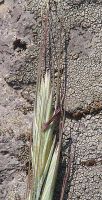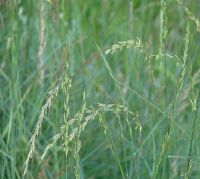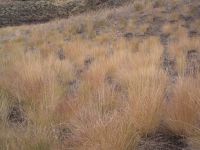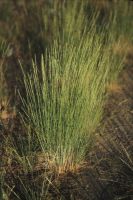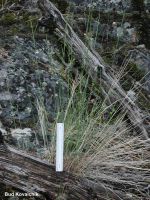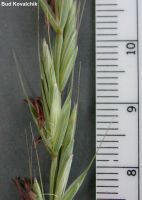Distribution: Occurring chiefly east of the Cascades crest in Washington; British Columbia to California, east to the Rocky Mountains and northern Great Plains.
Habitat: Sagebrush desert and ponderosa pine forest openings, occasionally to the subalpine.
Flowers: June-August
Origin: Native
Growth Duration: Perennial
Conservation Status: Not of concern
Pollination: Wind
Tufted perennial, the culms hollow, erect, usually glabrous, 4-10 dm. tall, often forming clumps 1.5 dm. broad.
Sheaths open, usually glabrous; auricles well-developed; ligules scarcely 1 mm. long; blades usually flat, 1.5-3 mm. broad, usually glabrous on the back and puberulent on the front; leaves numerous.
Inflorescence a loose, open spike 8-15 cm. long; spikelets usually 1 per node, from slightly longer to shorter than the internode, 6- to 8-flowered; glumes 7-9 mm. long, narrowly oblong, 4-5 nerved, sometimes awn-tipped; lemmas 8-11 mm. long, awnless, or with a divergent awn up to 2 cm. long; paleas rounded, slightly exceeding the lemma; anthers purplish.
Publication: Taxon 29(1): 168. 1980.
Agropyron spicatum (Pursh) Scribn. & J.G. Sm. [HC]
Agropyron spicatum (Pursh) Scribn. & J.G. Sm. var. inerme (Scribn. & J.G. Sm.) A. Heller
Agropyron spicatum (Pursh) Scribn. & J.G. Sm. var. pubescens Elmer [HC]
Agropyron spicatum (Pursh) Scribn. & J.G. Sm. var. spicatum [HC]
Agropyron vaseyi Scribn. & J.G. Sm.
Elymus spicatus (Pursh) Gould
Elytrigia spicata (Pursh) D.R. Dewey
Pseudoroegneria spicata (Pursh) Á. Löve ssp. inermis (Scribn. & J.G. Sm.) Á. Löve
Pseudoroegneria spicata (Pursh) Á. Löve ssp. spicata
Roegneria spicata (Pursh) Beetle
PNW Herbaria: Specimen records of Pseudoroegneria spicata in the Consortium of Pacific Northwest Herbaria database
WA Flora Checklist: Pseudoroegneria spicata checklist entry
OregonFlora: Pseudoroegneria spicata information
E-Flora BC: Pseudoroegneria spicata atlas page
CalPhotos: Pseudoroegneria spicata photos

